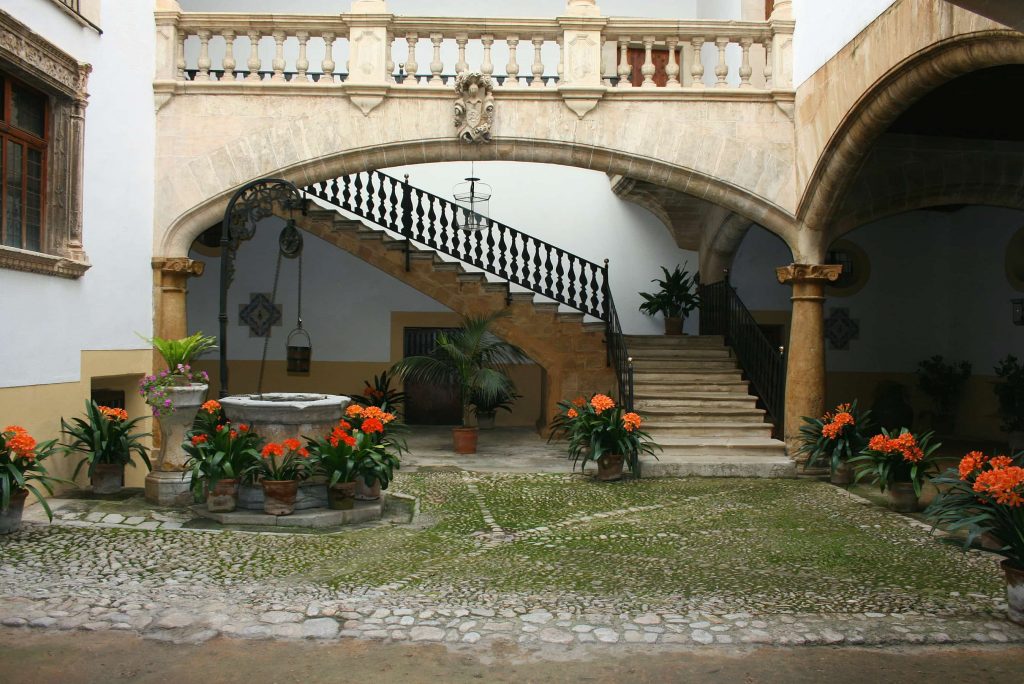Among the silence of the narrow streets in Palma’s old town, and with the slightly damp smell associated with shady places, the patios of Palma’s manor houses exist as a unique portrait of the history of the most influential families in the city. Together with La Lonja de Palma, the Palacio Real de la Almudaina, and the Palacio Episcopal, these patios are the most representative examples of civil architecture present in the city. A visit to see some of these emblematic places will give you an insight into Mallorcan nobility and its history.
Nivia Born Boutique Hotel encourages you to explore these historic houses. Impressive buildings – many with medieval beginnings –are testimony to the lives of Marquesses, heraldic families, and descendants of wealthy families. The opulence of the Mallorcan oligarchy can be appreciated in the carvings present on enormous doors, beautiful handrails, and ornate ironwork. Every detail, every corner reveals the height of luxury.
Interesting patios within 10 minutes’ walk of Nivia Born Boutique Hotel
Cal Marquès de Solleric – Can Morell (Paseo del Born, 27)
The original project for this building is attributed to the architect, Gaspar Palmer, and currently houses art exhibitions and a specialised bookshop.
Cal Marquès del Reguer – Casal Balaguer (C/ Unió, 3)
The second Marquess of Reguer acquired the property in 1730, and in 1872 the wealthy Blanes family took over the ownership. It formed part of the musician Josep Balaguer’s legacy and is currently owned by the city council.
Can Bordils (C/ Almudaina, 9)
The Sureda family refurbished this medieval house in the sixteenth century and the architect Guillem Forteza remodelled the patio in 1941.
Can Oms (C/ Almudaina, 7)
The coat of arms belonging to the Oms family, who occupied the house in 1642, can be seen on the staircase.
Can Juny (C/ Can Savellà, 13)
This house, with the Berga and Juny family crests, is believed to have played host to Carlos V, and you can see a commemorative window dedicated to him.
Can Vivot (C/ Can Savellà, 4)
The first Marquess of Vivot, Juan Sureda i Villalonga, refurbished what would become the Sureda family home from the 18th century onwards, in 1725.
Can Catllar de Llorer (C/ Can Savellà, 15)
Maria-Agnès Ribera i Garau acquired this house in the 19th century, and it houses one of the oldest gothic-style patios in Palma.
Can Oleza (C/ d’en Morey, 9)
Here you can see all the traditional elements of Palma’s patios: segmental arches, Ionian-style pillars, loggia, and wrought-iron railings.
Estudi General Lul·lià (C/ de Sant Roc, 4)
This patio features a stunning neo-baroque porticoed courtyard with semicircular arches atop gothic pillars.











